- Site Home
- Bizarre Postcards Home
- Pictorial Index
- 1913 Floods
- Accidental Deaths
- Animal Oddities
- Auschwitz Birkenau
- Babies & Infants
- Banksy
- Benares, India
- Catacombs
- Cremation
- Criminals
- Death Beds
- Ethnic
- Famine
- Film Noir
- Fire
- Gargoyles, Grotesques & Chimera
- Holiday Greetings
- Human Oddities
- Humourous
- Hunting
- Natural Disasters
- Open Coffins
- Roadside Attractions
- Suicide
- Surreal
- Torture
- War Casualties
- Wordplay
- Latest Updates
- Sitemap
- Webrings
- Contact
Bizarre Postcards (20)
Suicide
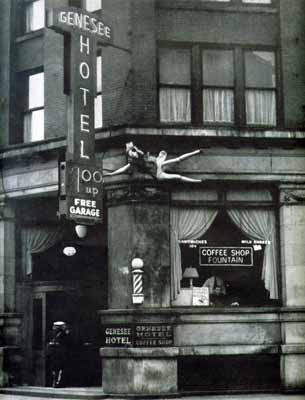
Suicide Fall
This isn't a postcard but a page from Life magazine of May 18th, 1942. The caption under the photograph reads...
In Buffalo, May 7, a 35-year-old Chicago divorcee named Mary Margaret Miller crawled onto an eighthstory ledge of the Genesee Hotel. For 20 minutes she perched there, swinging her legs and waving, whilst patrol-car sirens screamed in the street below. With the police arrived Photographer I. [Iggy] Russell Sorgi of the Buffalo Courier-Express. As he set his camera, Mrs. Miller clutched a ventilator in both hands and lowered herself over the ledge. Then she let go. Women in the street screamed. and Sorgi snapping his shutter in the last dreadful split second before death captured the breath-taking photograph above.
According to the book "Photography Handbook: Media Practice", this is Mary Miller, who had lived with her sister in Buffalo but had recently left saying she was going to Indiana to visit other relatives. (Her sister said she couldn’t think of a reason for the suicide, but remember divorce was very taboo back then.)
She checked into this hotel as "M. Miller, Chicago", locked herself in the bathroom and crawled out onto the window ledge. Photographer Russell Sorgi happened on the scene by chance; driving home from another assignment he saw a speeding police car and followed it. In the book, he describes the mechanics of how he set up and took the shot. It was one of those cameras that you have to remove the exposed slide and put in another one for each shot. He took two establishing shots as she sat on the ledge, and had just slammed the third slide into the camera when Miss Miller waved to the crowd and pushed off.
The photograph was used in a psychological study. It seems that only 4% of students who look at the photo actually notice Mary falling to earth in the center of the shot.
Surreal
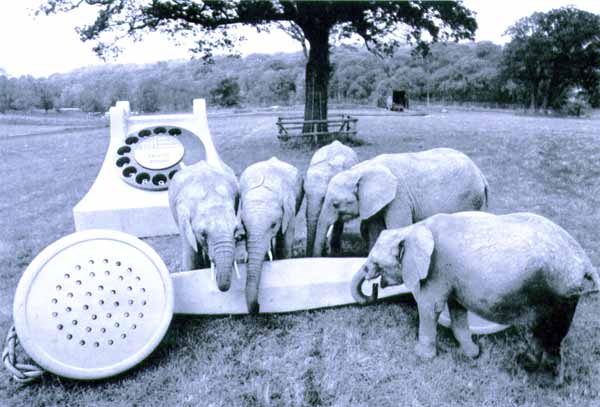
Elephants and Giant Telephone
This unused postcard has the printed text...
FPC077
"Hello"
Photo REX Features / RDR Productions
2008 Flashcards Inc.
800-531-0777
What is this? What does it represent? It's interesting that the telephone has an old fashioned british phone decal and even stanger that the number on the dial is Bristol 8000.
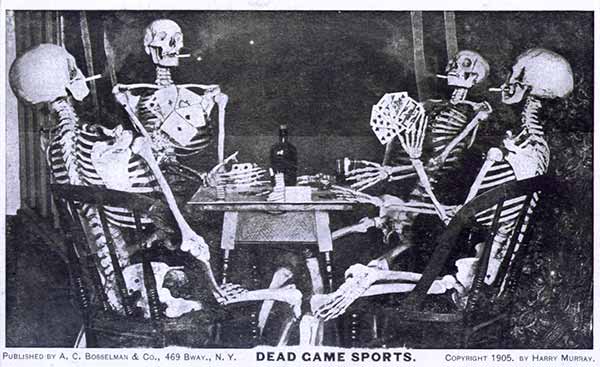
Dead Game Sports
This unused postcard has the printed text...
Published by A. C. Bosselman & Co., 469 Bway., N. Y.
Copyright 1905 by Harry Murray
Torture
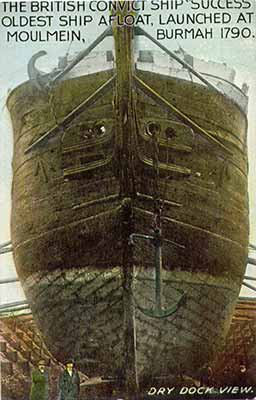
Success
The British convict ship Success.
Oldest ship afloat, launched at Moulmein, Burmah, 1790.
This unused postcard has no other printed text.
Success was a former merchant ship of 621 tons, 117 feet 3 inches x 26 feet 8 inches x 22 feet 5 inches depth of hold, built in Natmoo, Tenasserim, Burma in 1840. After initially trading around the Indian subcontinent, she was sold to London owners and made three voyages with emigrants to Australia during the 1840s. On one of these voyages, following the intervention of Caroline Chisholm, "Success" sailed into Sydney town just the week before Christmas 1849 with families who had survived the Great Famine. On 31 May 1852, Success arrived at Melbourne and the crew deserted to the gold-fields, this being the height of the Victorian gold rush. Due to an increase in crime, prisons were overflowing and the Government of Victoria purchased large sailing ships to be employed as prison hulks. These included Success, Deborah, Sacramento and President. In 1857 prisoners from Success murdered the Superintendent of Prisons John Price. In 1854 the ship was converted from a convict hulk into a stores vessel and anchored on the Yarra River, where she remained for the next 36 years.
In 1890, Success was purchased by a group of entrepreneurs to be refitted as a museum ship to travel the world advertising the perceived horrors of the convict era. Although never a convict ship, Success was billed as one, her earlier history being amalgamated with those other ships of the same name including HMS Success, which had been used in the original European settlement of Western Australia. She was incorrectly promoted as the oldest ship afloat, ahead of the 1797 USS Constitution. A former prisoner, bushranger Harry Power, was employed as a guide for her first commercial season, in Sydney Harbour in 1891. The display was not a commercial success, and her owners promptly abandoned their business venture and scuttled the ship in Kerosene Bay.
The following year, 1892, the sunken Success was sold to a second group of entrepeneurs and refloated. After a thorough refit she was taken on tour to Brisbane, Adelaide, Hobart and back to Sydney, then headed for England, arriving at Dungeness on 12 September 1894. In 1912 she crossed the Atlantic and was exhibited as a convict museum along the eastern seaboard of the United States of America and later in ports on the Great Lakes. In 1917 she was briefly returned to commercial service as a cargo carrier, but sank after being holed by ice. Refloated in 1918 she resumed her museum ship role and in 1933 was featured at the Chicago World Fair. However, despite ongoing repairs the vessel was becoming rapidly unseaworthy. She was towed to Lake Erie Cove in Cleveland, Ohio to be dismantled and sold as scrap, but was destroyed by fire while berthed alongside the Lake Erie Pier, on 4 July 1946.
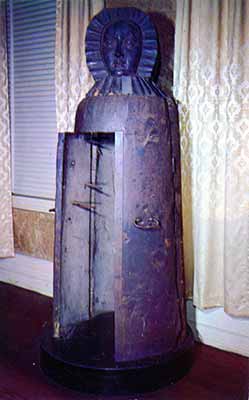
Iron Maiden
This unused postcard has the printed text...
The Iron Maiden, Ripley's Believe It Or Not Museum
St. Augustine, Florida
This famous torture instrument of the Dark Ages was also
known as a Spanish Mantle. Brought from
Nuremberg, Germany by Mr. Ripley, stands as
a mute reminder of the ignorance of the people
of the Dark Ages and as an accusing monument
to the cruelty of man.46045
K
Florida Souvenir Co., St. Augustine, Florida